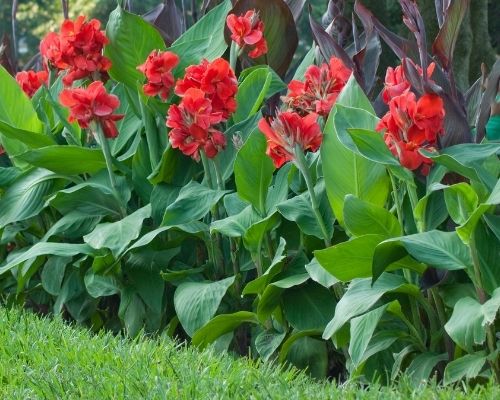Your Guide to Planning, Planting, and Growing Cannas
Cannas add energy and excitement wherever they're planted. These lush, tropical plants have big glossy leaves and exotic-looking flowers that are loved by hummingbirds. Foliage colors include emerald green, burgundy, and lime green, plus multi-colored stripes.
The frost-sensitive tubers are planted in late spring, and quickly grow into impressive 3 to 8-foot plants. Because cannas tolerate moist soils, they are ideal plants for rain gardens and are also well suited to growing at the edge of a ponds. Cannas grow well in containers, either planted on their own or combined with colorful annuals.
Start with a Better Bulb
It’s easy to see the difference in quality when you compare two cannas side by side. Canna rhizomes are graded by the number of “eyes” or growth points they display. A plump rhizome (on the right) with 3 to 5 eyes will produce a larger plant with a better display of color than a smaller rhizome (on the left) with fewer eyes.
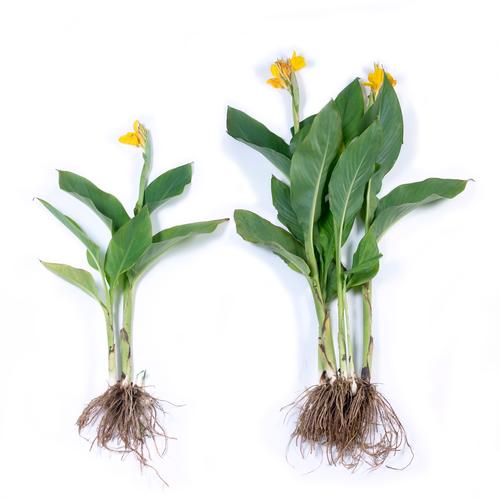
Plan for Success
Cannas are easy to grow. Here’s how to get them off to a great start.
Shade and Sun: Cannas will grow in full sun or partial shade.
Zone: Cannas are winter hardy in zones 9-10. In cooler zones they may be grown as annuals, or you can dig the roots in the fall and store them indoors for replanting the next spring. Reference the USDA Hardiness zone map here.
When to Plant: Cannas are sensitive to cold temperatures, so they should not be planted outdoors until after all danger of frost has passed. To get your cannas off to an early start, plant the rhizomes in pots indoors about a month before you will be planting them into the garden.
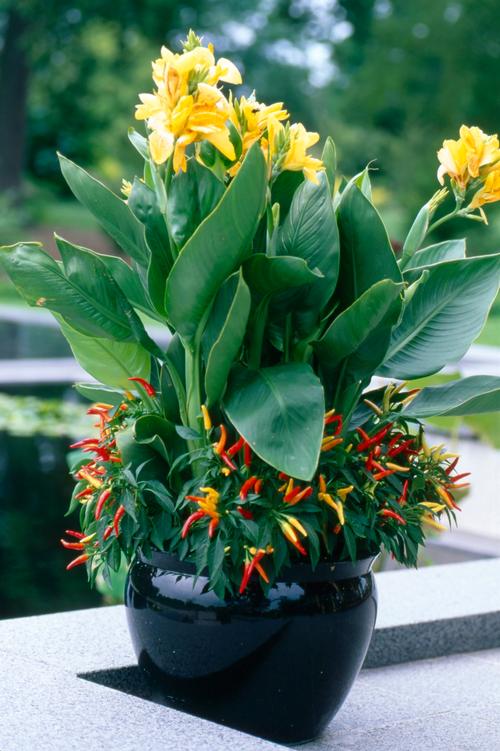
Where to Plant Cannas
Flower Beds and Borders: Cannas hit their stride in late summer and fall when most annuals and perennials are starting to fade. The bold foliage and brilliantly colored flower spikes keep gardens looking great right up to the first frost.
Landscape: Cannas may be used to create a living hedge, define an entrance, hide an unwanted view, or divide one garden area from another. They are ideal for planting along a fence or near a stone wall. Cannas grow well in relatively soggy soil where other plants may struggle.
Containers: A canna can turn a ho-hum pot or planter into a living work of art. Before planting, make sure the container is big enough to hold a large, thirsty canna with a vigorous root system. Dwarf cannas are a good choice for containers.
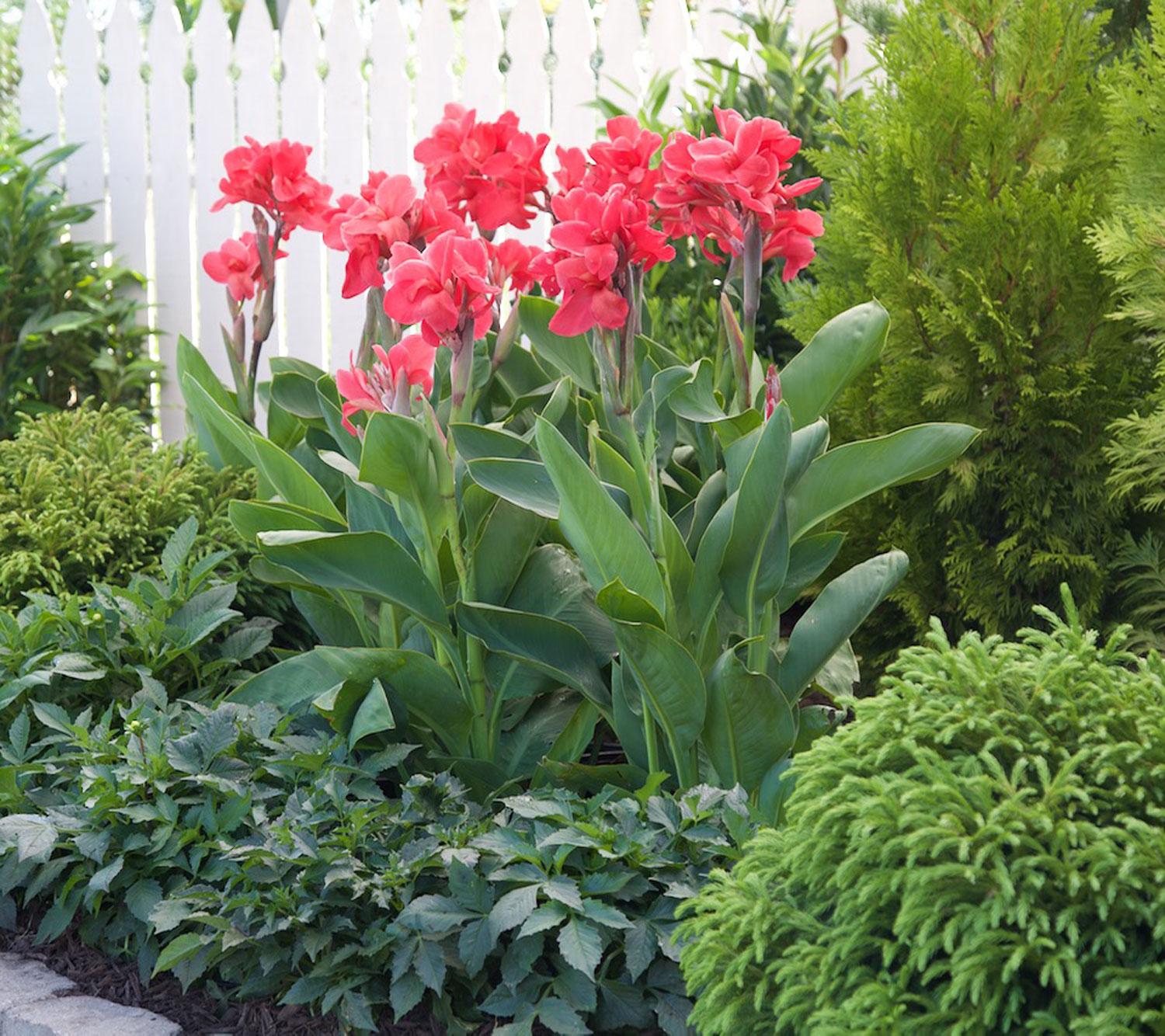
How to Plant Cannas
Loosen the soil, then dig a hole 2 to 3” deep.
Set the canna rhizome into the hole with the roots down and growing tips facing up.
Cover with soil and water as needed.

Planting Tips for Cannas
Cannas are heat-loving plants and will not grow in cold soil. The rhizomes can be planted as soon as all danger of frost has passed, but it’s best to wait until the soil has warmed to at least 65°F. In northern areas this will be late May to early June.
Cannas thrive in hot, humid weather. They are thirsty plants and need a consistent supply of water throughout the growing season.
In warm areas, cannas grow well in full sun or in partial shade. In cooler areas they grow best in full sun.
Rhizomes should be planted horizontally, 2 to 3” deep and 1 to 2 feet apart. After planting, it may take 2 weeks or more for the first shoots to appear. Once that happens, the plants grow quickly.
During the growing season, cannas appreciate a monthly dose of liquid fertilizer. This is especially true when they are grown in containers.
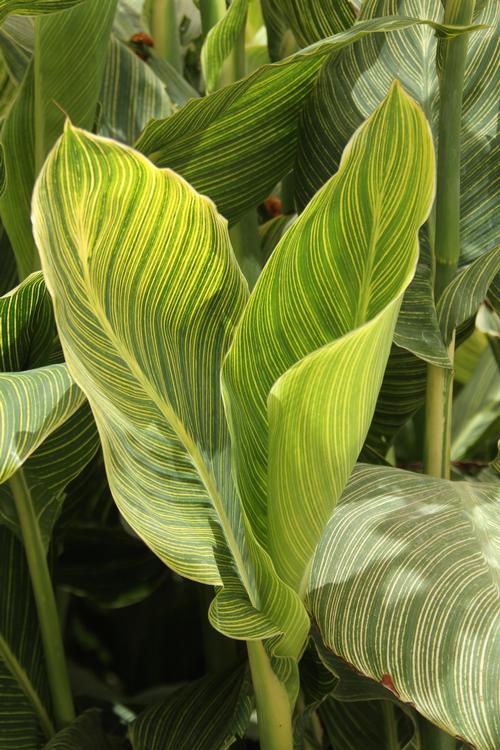
Caring for Cannas After They Bloom
Cannas are at their best in late summer and fall, and they continue growing until the foliage is killed by cold weather or frost. If you are in growing zones 9-10, the rhizomes (roots) of your cannas should be able to survive the winter in the ground. Simply cut off the current year's foliage, leaving a couple inches of stem close to the ground. When spring returns, the rhizomes will begin sending up new sprouts.
In areas with colder winters (zones 4-8), you have a choice: either discard the plants as you would other annuals, or dig up the rhizomes and store them indoors for replanting in the spring.
To dig up the rhizomes, you will need a shovel, a tarp and a sharp knife. Start by cutting the stalks to within 4” of the soil line. Next, carefully dig up the entire root mass, which may be as much as 18” in diameter. Lift out the root ball and place it on the tarp. If you are growing several different varieties of cannas, this is a good time to label them. Allow the root balls to dry out for a few days, moving them to a sheltered location if there is any danger of frost.
If possible, keep the root balls intact for the winter. Waiting until spring to separate the rhizomes helps to minimize damage and decay. Wrap the roots in damp burlap or put them into a large plastic bag (keeping the top open). Store in a cool (45-50°F), dark place where there is enough humidity to keep the rhizomes hydrated. Check the roots periodically during the winter months to make sure they are not too moist (rotting) or too dry (becoming shriveled). Adjust accordingly.
In the spring, gently pull or cut the rhizomes apart and replant the largest, healthiest ones.
Learn More: Fresh Ideas for Growing Cannas, Colorful Containers that Can Take the Heat, How to Grow Summer Bulbs in Containers, Best Bulbs for Late Summer Color
Ready to grow some cannas? We offer a nice selection HERE.


